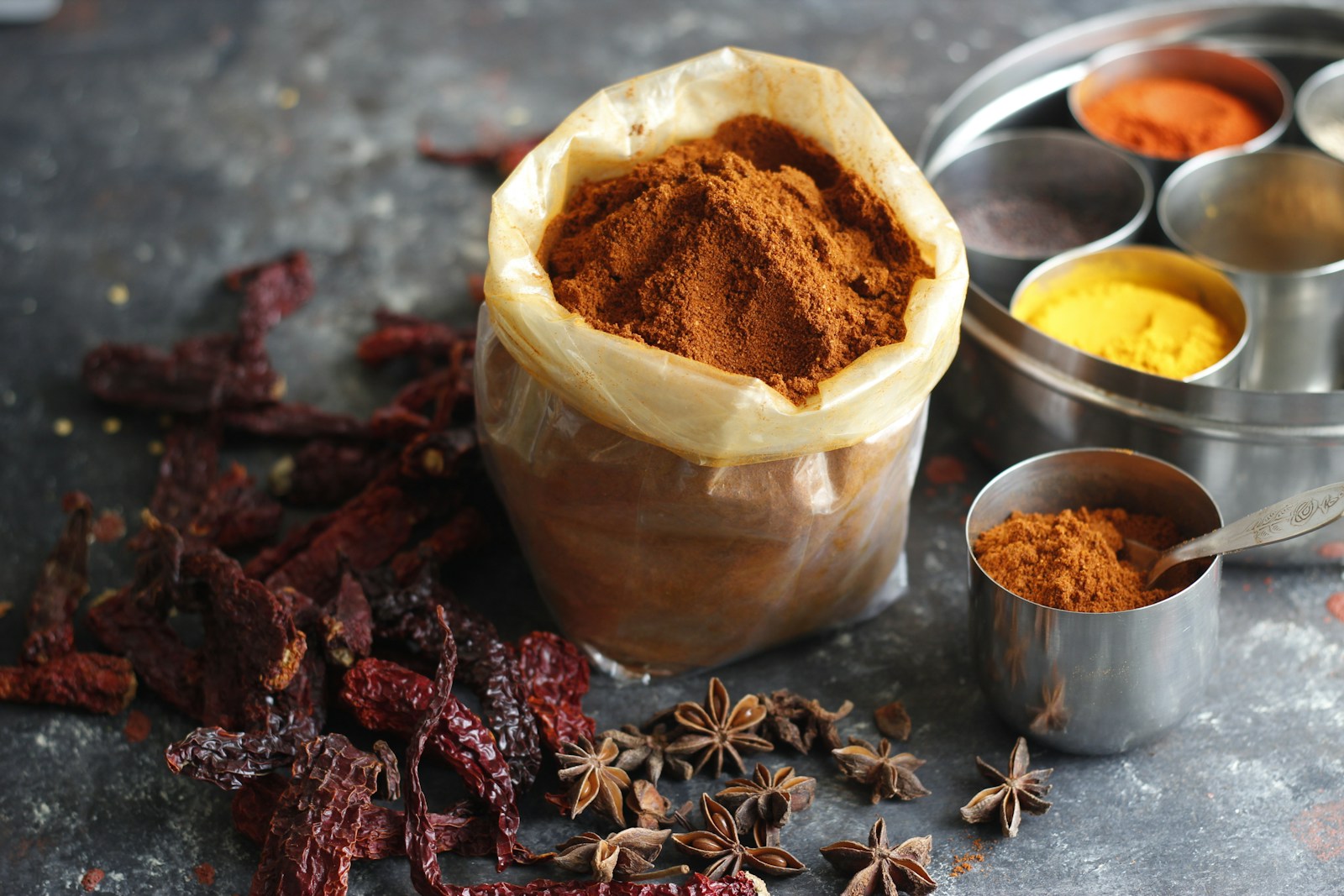Healing from Within: Herbal Remedies to Conquer Chronic Pain
Discover Potent Herbal Remedies for Chronic Pain Relief: Are you tired of living with chronic pain? Did you know that over fifty million Americans suffer from chronic pain every day?
But there is hope! In this article, we will explore potent herbal remedies that can provide relief and improve your quality of life.
From the power of turmeric to the healing properties of ginger, lavender, and more, these natural solutions can soothe your pain and help you live pain-free.
Discover the secrets to chronic pain relief today.
Key Takeaways
- Turmeric, ginger, lavender, and eucalyptus oil are herbal remedies that have anti-inflammatory and analgesic effects for chronic pain relief.
- Peppermint, willow bark, St. John’s Wort, and valerian root are specific herbal remedies known for their pain-relieving properties and their ability to alleviate chronic pain.
- Chamomile promotes better sleep, while peppermint has a cooling effect that reduces inflammation. Willow bark is beneficial for those with arthritis due to its anti-inflammatory properties, and St. John’s Wort regulates pain perception in the brain.
- Cannabis, specifically the compounds THC and CBD, has shown effectiveness in reducing chronic pain symptoms, but its use comes with potential side effects, dependency risks, and legal considerations.
The Power of Turmeric: A Natural Solution for Chronic Pain Relief
You can experience natural relief from chronic pain by harnessing the power of turmeric.
Turmeric, a vibrant yellow spice commonly used in Indian cuisine, has been recognized for its healing properties for centuries.
One of the key components of turmeric is a compound called curcumin, which has been found to have anti-inflammatory and analgesic effects.
These properties make turmeric a valuable natural alternative for managing chronic pain.
Curcumin works by inhibiting the activity of inflammatory enzymes and reducing the production of inflammatory molecules in the body.
This helps to alleviate pain and swelling associated with conditions such as arthritis, fibromyalgia, and even migraines.
Additionally, curcumin has been shown to enhance the production of endorphins, the body’s natural painkillers, further promoting pain relief.
To incorporate turmeric into your pain management routine, you can try adding it to your meals or taking turmeric supplements.
However, it’s important to note that the bioavailability of curcumin is quite low, meaning that your body may not absorb it efficiently.
To enhance absorption, it is recommended to consume turmeric with black pepper or fat, as these can increase its bioavailability.
Ginger: A Spice with Healing Properties for Chronic Pain
Discover Potent Herbal Remedies for Chronic Pain Relief: Did you know that ginger contains pain-relieving compounds that can provide relief for chronic pain?
Gingerols and shogaols are the active components in ginger that have been found to have anti-inflammatory and analgesic properties.
Incorporating ginger into a fantastic way is a terrific way to harness these healing properties – you can consume it in various forms such as fresh ginger, ginger tea, or even ginger supplements.
Ginger’s Pain-Relieving Compounds
Ginger contains compounds that have pain-relieving properties, making it a spice with healing properties for chronic pain. One of the main reasons gingers is effective in relieving pain is due to its anti-inflammatory properties.
Inflammation is a common cause of chronic pain, and ginger’s ability to reduce inflammation can provide significant relief.
The active compounds in ginger, such as gingerol and zingiberene, have been found to inhibit the production of inflammatory chemicals in the body.
Additionally, ginger has been shown to affect pain receptors in the body, specifically those involved in the perception of pain.
By blocking these pain receptors, ginger can help alleviate the sensation of pain. Incorporating ginger into your diet or taking ginger supplements may be a natural and effective way to manage chronic pain.
Effective Ginger Consumption Methods
To effectively consume ginger and harness its healing properties for chronic pain relief, consider incorporating it into your diet or trying ginger supplements.
Here are some effective methods for consuming ginger:
- Incorporate ginger into your diet: Add fresh ginger root to your cooking, whether it’s in soups, stir-fries, or marinades. You can also grate ginger and sprinkle it over salads or blend it into smoothies for a zesty kick.
- Try ginger tea: Brew a cup of ginger tea by steeping fresh ginger slices in hot water for about 10 minutes. Ginger tea not only provides warmth and comfort but also offers numerous health benefits, including reducing inflammation and relieving pain.
Ginger essential oil is another option for incorporating ginger into your routine. Here are some uses for ginger essential oil:
- Topical application: Dilute ginger essential oil with carrier oil and apply it directly to the affected area for relief from muscle and joint pain.
- Aromatherapy: Diffuse a few drops of ginger essential oil to create a calming and pain-relieving atmosphere in your home.
Lavender: Unlocking Its Pain-Relieving Potential
Can lavender effectively relieve your chronic pain? Many people have turned to lavender for its soothing effects and potential pain-relieving properties. Unlocking lavender’s healing properties can provide a natural and holistic approach to managing chronic pain.
Lavender, also known as Lavandula angustifolia, is a fragrant herb commonly used in aromatherapy and traditional medicine. It has been used for centuries to promote relaxation, reduce anxiety, and alleviate pain. The soothing effects of lavender can be attributed to its various compounds, including linalool and linalyl acetate, which possess anti-inflammatory and analgesic properties.
To better understand how lavender can help with chronic pain relief, take a look at the following table:
| Compound | Effect on Pain Relief |
|---|---|
| Linalool | Reduces inflammation |
| Linalyl acetate | Alleviates pain |
These compounds work together to create a synergistic effect, enhancing the pain-relieving potential of lavender. By reducing inflammation and providing analgesic effects, lavender may help manage chronic pain conditions such as arthritis, fibromyalgia, and migraines.
As you delve into the benefits of lavender, it’s important to explore other herbal remedies for chronic pain relief. One such remedy is eucalyptus, a refreshing and invigorating herb known for its analgesic properties.
Eucalyptus: A Refreshing Remedy for Chronic Pain
Explore how eucalyptus can refresh and provide relief for your chronic pain. Eucalyptus, with its invigorating aroma and numerous health benefits, has long been used as a natural remedy for various ailments, including chronic pain. Here are some ways in which eucalyptus can help alleviate your discomfort:
- Eucalyptus oil benefits:
- Pain relief: Eucalyptus oil contains compounds called cineole and eucalyptol, which have analgesic properties that can help reduce pain and inflammation.
- Improved circulation: The application of eucalyptus oil on the affected area can enhance blood flow, promoting faster healing and soothing pain.
- Eucalyptus tea recipe:
- Ingredients: 1 tablespoon of dried eucalyptus leaves, 1 cup of boiling water.
- Preparation: Place the dried eucalyptus leaves in a cup and pour boiling water over them. Let it steep for 10 minutes, then strain the tea.
- Usage: Drink the eucalyptus tea while it’s still warm, up to three times a day. The soothing properties of eucalyptus can help ease chronic pain and relax tense muscles.
Incorporating eucalyptus into your pain management routine can provide refreshing relief. Whether you choose to use eucalyptus oil or enjoy a cup of eucalyptus tea, this natural remedy has the potential to alleviate your chronic pain and improve your overall well-being.
Chamomile: Soothing Chronic Pain Naturally
Try incorporating chamomile into your routine for a natural and soothing way to relieve chronic pain. Chamomile is a popular herb known for its calming and sedative effects. It has been used for centuries to alleviate various ailments, including chronic pain. One of the most common ways to consume chamomile is through chamomile tea. This herbal infusion is not only delicious but also promotes relaxation and helps to ease tension in the body.
Chamomile contains compounds that have been found to have anti-inflammatory properties, making it a potential remedy for chronic pain conditions such as arthritis and fibromyalgia. Additionally, chamomile’s sedative effects can help to promote better sleep, which is essential for managing chronic pain. By incorporating chamomile tea into your daily routine, you can experience the soothing benefits of this herb and potentially find relief from your chronic pain.
To help you understand the benefits of chamomile for chronic pain relief, here is a table summarizing its key properties:
| Property | Description |
|---|---|
| Anti-inflammatory | Chamomile contains compounds that have been found to reduce inflammation in the body. |
| Sedative | Chamomile has a calming effect on the nervous system, promoting relaxation and better sleep. |
| Relaxant | Chamomile tea can help to relax muscles and ease tension, providing relief from chronic pain. |
Incorporating chamomile into your routine through chamomile tea can be a simple and effective way to soothe chronic pain naturally. Now, let’s explore another herbal remedy, peppermint, and discover how it can help in cooling the flames of chronic pain.
Peppermint: Cooling the Flames of Chronic Pain
Peppermint is not just a refreshing flavor; it also holds powerful pain-relieving properties that can help soothe chronic pain. The cooling effect of peppermint can provide relief to inflamed areas, reducing discomfort and promoting healing. Whether used in the form of essential oil, tea, or topical creams, peppermint can be a valuable addition to your chronic pain management routine.
Peppermint’s Pain-Relieving Properties
Discover Potent Herbal Remedies for Chronic Pain Relief: Are you aware of how peppermint can relieve chronic pain? Peppermint has been used for centuries for its medicinal properties, and its effectiveness in treating various ailments, including chronic pain, is well-documented. Here are some key applications of peppermint in pain relief:
- Topical application: Peppermint oil, when applied directly to the affected area, can provide a cooling sensation that helps to numb the pain. Its analgesic and anti-inflammatory properties make it a popular choice for soothing sore muscles, headaches, and joint pain.
- Internal consumption: Peppermint tea or capsules can be consumed to alleviate chronic pain from conditions like irritable bowel syndrome (IBS) and menstrual cramps. The menthol in peppermint acts as a natural muscle relaxant, easing the discomfort associated with these conditions.
Peppermint’s pain-relieving properties make it a valuable herbal remedy for those seeking relief from chronic pain. Whether used topically or consumed internally, peppermint can provide a natural and effective solution for managing pain.
Cooling Effect on Inflammation
Did you know that peppermint has a cooling effect on inflammation, providing relief from chronic pain? When it comes to managing chronic pain, finding natural remedies that effectively reduce inflammation is crucial.
Peppermint, with its refreshing and cooling properties, can help alleviate the discomfort caused by inflammation. This cooling effect on arthritis and other inflammatory conditions can provide much-needed relief.
One of the benefits of cold therapy for inflammation is its ability to constrict blood vessels, reducing blood flow to the affected area and decreasing swelling.
Peppermint’s cooling sensation can help soothe inflamed tissues and provide a numbing effect that eases the pain. Additionally, the menthol in peppermint acts as a natural analgesic, offering further pain relief.
To understand the cooling effect of peppermint on inflammation better, take a look at the table below:
| Cooling Effect on Inflammation |
|---|
| Reduced blood flow to the affected area |
| Decreased swelling |
| Soothing and numbing effect |
Peppermint’s cooling properties make it a valuable herbal remedy for managing chronic pain caused by inflammation.
By incorporating peppermint into your pain management routine, you may find relief and improved quality of life.
Willow Bark: Nature’s Aspirin for Chronic Pain Relief
If you’re looking for a natural alternative to aspirin for chronic pain relief, consider willow bark.
Willow bark has been used for centuries as a remedy for pain and inflammation. Here are some reasons why you should try it:
- Willow bark benefits:
- Pain relief: Willow bark contains a compound called salicin, which is like aspirin. Salicin is known for its ability to reduce pain and inflammation in the body. It works by inhibiting the production of certain chemicals that cause pain and inflammation.
- Anti-inflammatory properties: In addition to its pain-relieving effects, willow bark also has anti-inflammatory properties. It can help reduce swelling and inflammation in joints, making it a great option for those suffering from conditions like arthritis.
- Turmeric dosage:
- When using turmeric for pain relief, it is important to know the proper dosage. The recommended dosage of turmeric varies depending on the form you are using. For example, if you are using turmeric powder, the general recommendation is to take 500-2,000 milligrams per day. However, it is always best to consult with a healthcare professional to determine the right dosage for your specific needs.
St. John’s Wort: An Herbal Remedy for Nerve Pain
If you’re experiencing nerve pain and seeking a natural remedy, consider trying St. John’s Wort, a potent herbal option.
St. John’s Wort has been used for centuries as an alternative treatment for nerve pain.
It is believed to work by increasing the levels of certain chemicals in the brain that regulate mood and pain perception.
When it comes to using St. John’s Wort for nerve pain, it is important to know the correct dosage and potential side effects.
The recommended dosage can vary depending on the severity of the pain, but it is recommended to start with a low dose and gradually increase if needed.
It is best to consult with a healthcare professional or a qualified herbalist to determine the appropriate dosage for your specific condition.
While St. John’s Wort is considered safe when used as directed, it can cause some side effects in certain individuals.
These may include gastrointestinal upset, dizziness, and sensitivity to sunlight.
It is also important to note that St. John’s Wort can interact with certain medications, including antidepressants, birth control pills, and blood thinners.
Therefore, it is crucial to inform your healthcare provider about any medications you are currently taking before starting St. John’s Wort.
Valerian Root: Calming Chronic Pain, the Natural Way
To calm chronic pain the natural way, try using valerian root as a potent herbal remedy.
Valerian root, derived from the Valeriana officinalis plant, has been used for centuries to promote relaxation and alleviate pain.
Here are some key benefits of valerian root:
- Reduces Anxiety: Valerian root has been shown to have anxiolytic properties, making it an effective natural remedy for chronic pain associated with anxiety disorders or stress.
- Induces Sleep: Chronic pain often disrupts sleep patterns, leading to fatigue and worsening pain. Valerian root can help improve sleep quality by promoting relaxation and reducing insomnia.
When using valerian root as a natural remedy for chronic pain, it is important to consider the proper dosage.
It is recommended to start with a low dose, around 300-600mg, and gradually increase if needed.
However, it is essential to consult with a healthcare professional or herbalist to determine the appropriate dosage for your specific condition.
Valerian root is a valuable herbal remedy that can provide relief from chronic pain naturally.
By incorporating this powerful herb into your pain management routine, you can experience its benefits and potentially reduce the need for pharmaceutical interventions.
Cannabis: Exploring the Therapeutic Benefits for Chronic Pain Relief
Now it’s time to explore the therapeutic benefits of cannabis for chronic pain relief.
Cannabis has been found to be effective in reducing pain and inflammation due to its active compounds, such as THC and CBD.
However, it’s important to be aware of the potential side effects and risks associated with cannabis use, including cognitive impairment and addiction.
Additionally, legal considerations and regulations vary by country and state, so it’s crucial to understand the laws in your area before considering cannabis as a treatment option for chronic pain.
Efficacy of Cannabis
Explore the effectiveness of cannabis as a potent herbal remedy for chronic pain relief.
Cannabis, particularly its active compounds, such as CBD (cannabidiol), has gained significant attention in recent years for its potential therapeutic benefits.
Medical marijuana research has shown promising results in alleviating chronic pain, making it a viable alternative for those seeking natural remedies. Here are two key points to consider:
- Efficacy of CBD:
- CBD, a non-psychoactive compound found in cannabis, has been found to have analgesic properties, reducing pain sensation and inflammation.
- Studies have shown that CBD can interact with the endocannabinoid system in the body, which plays a crucial role in pain regulation.
- Medical marijuana research:
- Numerous studies have examined the use of medical marijuana for chronic pain management, with many demonstrating its effectiveness in reducing pain symptoms.
- Research suggests that medical marijuana may be a viable option for individuals who have not found relief from traditional medications or who experience adverse side effects.
Side Effects and Risks
Be aware of the potential side effects and risks associated with cannabis use for chronic pain relief.
While cannabis has shown promise in alleviating chronic pain, it is important to consider the potential alternatives and the long-term effects of its use. One potential side effect of cannabis use is cognitive impairment, including memory and attention problems.
Additionally, cannabis may cause dizziness, drowsiness, and impaired coordination, which can be dangerous and increase the risk of accidents. It is also worth noting that cannabis use may lead to dependency and addiction, especially with prolonged use.
Furthermore, the long-term effects of cannabis on the brain and other organs are still being studied, and it is essential to stay informed about the latest research findings.
As with any medication or treatment, it is crucial to discuss the potential risks and benefits with your healthcare provider before considering cannabis for chronic pain relief.
Legal Considerations and Regulations
Consider the legal considerations and regulations surrounding the therapeutic benefits of cannabis for chronic pain relief.
As increased people turn to cannabis as an alternative treatment, it is crucial to understand the ethical implications and the importance of patient access.
Here are some key points to keep in mind:
- Ethical implications:
- The use of cannabis for medicinal purposes raises questions about morality and societal norms.
- Some argue that patients should have the right to choose their treatment, while others raise concerns about potential misuse or dependency.
- Patient access:
- Legal restrictions and regulations vary from country to country and even within different states or provinces.
- Access to cannabis for chronic pain relief may be limited by factors such as medical prescriptions, medical marijuana programs, or specific qualifying conditions.
Navigating the legal landscape of cannabis for chronic pain relief requires careful consideration of ethical implications and an understanding of patient access rights.
Frequently Asked Questions
Are There Any Potential Side Effects or Risks Associated with Using Turmeric for Chronic Pain Relief?
Using turmeric for chronic pain relief may have potential risks and side effects.
It is important to note that turmeric can interact with certain medications, such as blood thinners and may cause gastrointestinal issues or allergic reactions in some individuals.
However, there are alternative herbal remedies available for chronic pain relief that may have fewer risks.
It is always best to consult with a healthcare professional before starting any new herbal remedy to ensure it is safe for you.
Can Ginger Be Used Topically to Alleviate Chronic Pain, or Is It Only Effective When Ingested?
Ginger can indeed be used topically to alleviate chronic pain. It has anti-inflammatory properties that can help reduce pain and swelling when applied directly to the affected area.
However, it is important to note that ginger’s effectiveness as a topical pain reliever may vary from person to person.
As for turmeric, while it is considered safe for most people, there are potential risks associated with its use for pain relief, such as stomach upset or allergic reactions.
How Does Lavender Work to Relieve Chronic Pain, and Are There Any Specific Methods of Application That Are Most Effective?
Lavender, a lovely and lush herb, is known for its remarkable ability to relieve chronic pain.
But how does it work its magic? Lavender contains compounds that interact with the body’s pain receptors, reducing inflammation and promoting relaxation.
For the most effective relief, try applying lavender essential oil topically to the affected area or adding a few drops to a warm bath.
The soothing scent and healing properties of lavender will help alleviate your pain.
Is Eucalyptus Oil Safe to Use on All Types of Chronic Pain, or Are There Certain Conditions or Situations Where It Should Be Avoided?
Eucalyptus oil is a potent herbal remedy for chronic pain relief.
It is effective in reducing inflammation and providing a soothing sensation when applied topically. However, there are certain conditions and situations where caution should be exercised.
Eucalyptus oil should be avoided if you have sensitive skin, respiratory issues, or are pregnant. Additionally, it is important to dilute the oil properly before use to prevent skin irritation.
What Is the Recommended Dosage or Form of Chamomile for Treating Chronic Pain, and How Long Does It Typically Take to Experience Relief?
To find relief from chronic pain using chamomile, it’s important to know the recommended dosage and how long it takes to experience results.
The right amount of chamomile can vary depending on the individual and the severity of the pain, so it’s best to consult with a healthcare professional. Typically, it takes a few weeks of consistent use to feel the effects of chamomile.
However, keep in mind that everyone’s experience may differ.
Elizabeth Redd: I am a passionate advocate for Health and Healing, dedicated to empowering individuals to live their best lives.
As the founder and publisher of Health and Healing, I have established myself as a guiding force in the wellness industry.
I am committed to providing the latest research, holistic approaches, and inspiring stories to open new possibilities for your health and healing journey.
Learn more about Elizabeth and Join Us at Health and Healing. Also, check out My About Page.







0 Comments